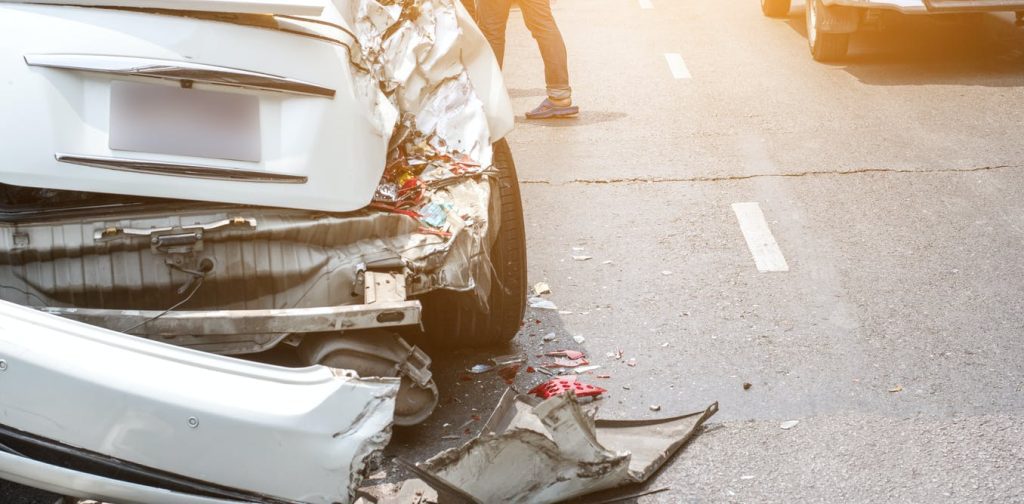Facial injuries hurt Nigerians’ pockets too: how to reduce the burden

Injury to the face – from road traffic accidents, for example – can leave a person with a damaged appearance or functional impairment, like difficulty chewing. Treatment helps to restore facial appearance and function and can give some psychological relief.
In Nigeria, facial injuries account for one out of every 10 bodily injuries. In a study of 268 patients in Ghana, motor vehicle accidents were the leading cause of mandibular fractures – 75.4%. Other causes included assault, gunshot, falls and industrial accidents.
The economic burden of treating facial injuries is large, and falls on the state and on those injured. For instance, the approximate cost of treating lower jaw fractures of 50 patients in Kano State, north west Nigeria was N3,198,139 around US$7,698 in 2015. The overall health budget for the state in 2015 was N18.75 billion (US$45 million). The gross national income per capita in Nigeria for 2015 was US$2,820.
It’s also a drain on patients and their caring relatives. In Nigeria, payment for healthcare is mostly an out-of-pocket expenditure. Only about 10% of the population had health insurance in 2020.
In most developed nations, healthcare services are funded by the government and various forms of health insurance schemes. For example, the hospital billing cost for treatment of lower jaw fractures in Seattle in the US was an average of US$14,221 per patient in 2010. Only one third of the Seattle patients were uninsured and had to individually pay for their treatments.
We carried out a study to determine the treatment cost of lower jaw fractures and methods of payment in Nigeria to evaluate the financial implications of facial injury. In our study, at least eight out of 10 patients paid between ₦42,900 (US$103) and ₦132,500 (US$319) out-of-pocket. Per capita income in the country for 2020 was US$2,000.
Unsurprisingly, all the low-income patients were uninsured and were responsible for their treatment. This may result in financial hardship for individual patients and their households.
Measures to curtail this method of healthcare payment must be sought. Nigeria needs a better approach with sustained and massive funding to promote affordable access to quality healthcare.
Causes and costs
We collected data from the medical records and hospital billing sheets of 100 patients who were treated for lower jaw fractures. Just over 80% of the injuries were caused by automobile, bike and pedestrian accidents.
More than 11,800 road traffic casualties were reported in Nigeria during the fourth quarter of 2021. In the previous quarter, about 8,800 injuries and 1,400 deaths from road traffic crashes were counted in the country. Most road accidents occurring in Nigeria are classified as serious. Violations of rules about speed, road signs or vehicle lights were the leading causes of road traffic accidents.
Assault was the cause of 12% of the injuries.
Only four of the patients in our study were in the low income bracket – possibly because low earners don’t usually go to a university teaching hospital. But 87% of all the patients were uninsured and paid the bills themselves, including all the low-income patients.
Direct treatment cost excludes other expenditure incurred while the patient is in the hospital. Transport fares of patients and their relatives, accommodation of relatives, and loss of income while out of work are among these other variable costs.
The direct treatment costs of broken lower jaws ranged between ₦42,900 (US$103) and ₦132,500 (US$319) as at January 2020. This may vary depending on the period and mode of treatment cost analysis in different health facilities in the country. The lowest treatment cost is still higher than the national minimum monthly wage of N30,000 (US$71.51).
Funding of medical care
Massive and sustained funding is essential to achieving universal health coverage. The national health insurance scheme was officially launched on 6 June 2005 to offer affordable and quality healthcare for all Nigerians irrespective of their socioeconomic, political and religious standing through multiple prepayment funds. It commenced operations in September 2005 and covered about 10% of the population as at 2020.
The basic package of Nigeria’s health insurance scheme would pay for some of the care received by patients with facial injuries. This is the minimum benefit available to all enrollees. Individual enrollees could subscribe to a different package with added benefits – and a higher premium – in both this scheme and private health insurance.
Other aspects of treatment not listed in the benefits package must be paid for by the patients.
Most enrollees on the national health insurance scheme are government employees who belong to the middle- and high-income classes.
Community health insurance is a social health insurance programme for the informal sector with about 1% coverage. Reasons for low coverage include unaffordable premiums, unattractive benefit packages, and mistrust between policy managers and potential enrollees.
The out-of-pocket model of healthcare financing is prevalent in sub-Saharan Africa and other low- and middle-income countries with poor government healthcare expenditures.
The high incidence of out-of-pocket payment leaves the poor poorer. Other consequences include delays in seeking quality healthcare and the incentive to patronise unqualified providers.
The gaps in financial risk protection for the economically vulnerable could leave households in financial distress.
Steps to take
Prevention of injury is one step. Since road traffic crashes are the most common cause of facial injury in Nigeria, the Federal Road Safety Commission and other relevant government agencies should educate the public about the importance of seat belts and protective headgear. It has been shown that these reduce injuries.
Government should also increase health insurance coverage through massive public engagement on the benefits of health insurance. It should provide long-term loans for community and private health insurance schemes in order to make the premiums affordable for more people. Ghana’s system is a good example.
All health insurance schemes in the country should offer enrollees a basic healthcare package that would be affordable to low-income Nigerians. Claims should receive prompt and transparent attention from the policy managers of insurance companies. This will encourage people to join the health insurance schemes and keep up their payments.






